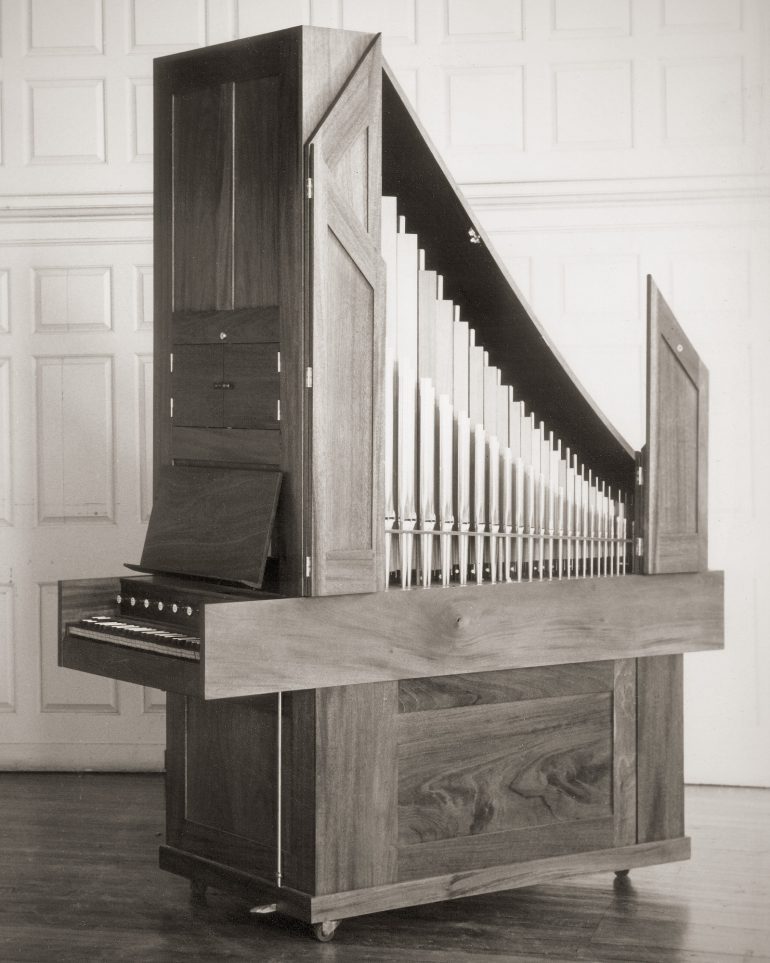
- phone: 978.283.1909
- email: cbfisk@cbfisk.com
Opus 66A
Yale University
New Haven, CT
Created: 1974Both organs (Opus 66 & Opus 66A) were built in 1974 based upon the earlier four-stop positive, Opus 64. Of these instruments Charles Fisk wrote:
The Conservatory’s new chamber organ, while conceived as an all-purpose chamber instrument, with continuo playing as a specialty, draws its inspiration from the work of John Snetzler, the eighteenth century Swiss who spent most of his professional life in England… This organ employs extensively the pipe scales and forms found in the 1761 Snetzler presently in the possession of the Smithsonian Institution. The voicing techniques also follow Snetzler’s example, as does the flexible winding of the instrument. Like the Smithsonian Snetzler, the organ has its stops divide just below middle C, making possible a difference of sonority between the left and right hands, much as if the organ possessed two manuals. Snetzler’s machine stop pedal is also included; when depressed this device disconnects the upperwork, making echo effects possible, again almost as though the instrument had two manuals instead of one.
The New England Conservatory organ was inaugurated in a program of solo and concert music in Jordan Hall on March 4, 1974; the Yale instrument has been used in similar concerts.
Stopped Diapason Treble 8′
Stopped Diapason Bass 8′
Wooden Principal 4′
Fifteenth Bass 2′
Fifteenth Treble 2′
Twenty-second 1′
Sesquialtera Bass
Cornet Treble
Mixture Treble
Stops divided at B0-c1
hitch down disconnects high pitches
Compass: 55 notes GGG, AAA, CC-e3.
